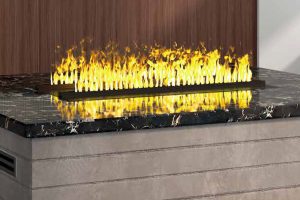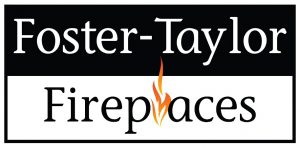Fireplaces have evolved from essential heating sources to decorative elements in modern homes, providing additional warmth and ambiance during the winter months. However, even though their primary function may have changed, the importance of regular maintenance to ensure safe and efficient operation cannot be understated. As the chill of winter approaches, it’s the perfect time to perform some essential checks and maintenance on your fireplace. 
Understanding the basic components and functions of a fireplace is crucial for proper care. A traditional fireplace consists of the firebox, the area where the fire burns, connected to a flue surrounded by the chimney, which expels smoke and gases outside. The hearth extends into the room, providing a non-combustible area around the fire, while the mantel serves as a decorative element. The damper, a critical component, regulates the flow of air and smoke through the chimney and must be open while the fireplace is in use to prevent smoke from entering the room.
Properly starting a fire is vital for both safety and efficiency. Use only dry, hard woods like ash, hickory, oak, or maple, which burn hotter and cleaner than softer woods. Avoid burning trash or treated wood, as these can release harmful chemicals. Start with a base of newspaper or wood shavings, add kindling, and then arrange the logs in a way that allows air to circulate. Lighting the kindling with a long match or grill lighter, with the damper open and a window slightly ajar, will help draw smoke up the chimney instead of into your home.
Regular cleaning of the firebox is necessary to maintain a safe fireplace. Leave a thin layer of ash to help ignite new fires, but remove excess ash if it exceeds two inches in depth. During the off-season, clear out all residual ashes. Use a fireplace shovel and metal bucket for ash removal, ensuring the ashes are cool before disposal. Vacuum out any remaining debris with a shop vacuum after a few days to prevent ash dust from spreading.
Soot and creosote buildup are common issues with wood-burning fireplaces. Soot can often be cleaned with soapy water and a stiff brush, but creosote, a flammable residue from unburnt wood particles, requires more attention. Inspect the chimney flue regularly with a flashlight for any creosote accumulation. If you find significant buildup or any structural issues, it’s advisable to call a certified chimney sweep. Professional cleaning and inspection should be done at least once a year if the fireplace is used frequently.
Additionally, inspect the physical condition of your fireplace. Check the firebox for any cracks or damage, ensure the damper functions correctly, and inspect the chimney exterior. Look at the chimney cap to make sure it’s not blocked by debris, which could impede airflow and pose a fire hazard. The mortar and flashing around the chimney should also be checked for cracks or signs of wear, and repaired as needed to prevent leaks and deterioration.
While many of these maintenance tasks can be DIY, certain aspects, especially those involving structural integrity and creosote removal, are best handled by professionals. A well-maintained fireplace not only enhances the comfort and aesthetic of your home but also ensures the safety of your household. By taking these steps before the winter sets in, you can enjoy the cozy warmth of your fireplace with peace of mind.
